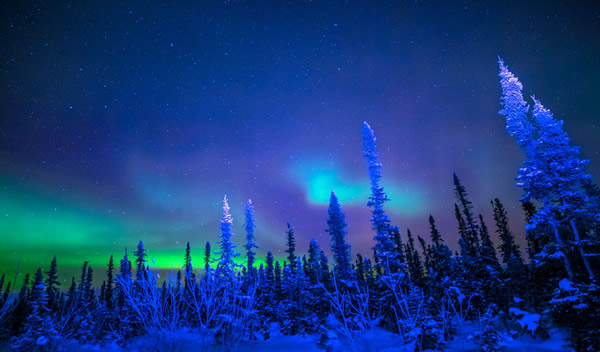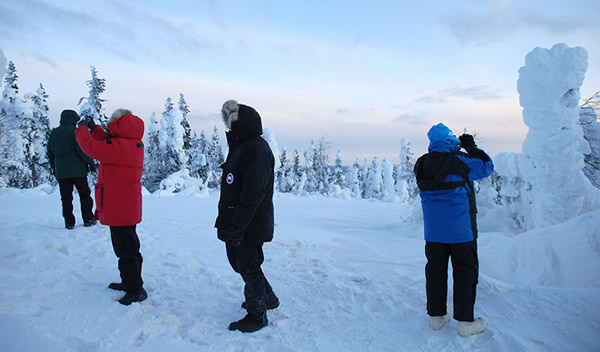Dressing for your AuroraQuest Adventure
Adequate winter clothing is absolutely the most essential part of the gear you bring with you for your Alaska adventure. Without it, your enjoyment and safety are imperiled.
You will need to dress in layers, starting with light to medium-weight synthetic or silk underwear (tops and bottoms). This can be followed with another layer of medium-weight synthetic thermal tops and bottoms. Next, we recommend a medium to heavy-weight pair of bib overalls or ski pants, preferably waterproof or at least water repellant. A medium-weight wool sweater or synthetic pile pullover is recommended next, topped off with a heavy-weight winter parka with hood. A medium-weight wool or synthetic cap for your head is also highly recommended. For your feet, a pair of heavy wool socks and heavy snow boots with liners is necessary. For your hands, a light to medium-weight pair of wool or synthetic gloves will give you some protection when adjusting and setting up your camera gear, with a heavy-weight pair of winter gloves or mittens to wear at all other times. Do not bring any cotton clothing, as it is incapable of holding warmth once it is damp. Please contact us by phone or email if you have any questions whatsoever about the winter conditions here during the time of your tour, as the weather varies during our aurora season. We can recommend reliable and economical local winter gear rentals in case you cannot equip yourself from home.


Tips for Dressing for Alaska’s Winter
1. Dress in layers, starting with a pair of light-medium weight silk or synthetic long underwear (tops & bottoms).
2. Do not bring any cotton clothing as it is practically worthless as an insulator and wicker of moisture. Wool and synthetics are best.
3. A heavy-weight down hooded parka is essential outerwear for your Alaska winter adventure.
4. If you are prone to cold hands and/or feet, bring some handwarmer packets to put in your gloves and boots.
5. Alcohol and tobacco impair your peripheral circulation and intensify the effects of cold weather, so avoid their use as much as possible.
6. Get plenty of rest and nourishing food to keep your internal heat mechanism functioning at full capacity.
7. Avoid overheating! If you exert to the point of sweating, make sure to peel off layers to prevent dampening your clothing which will cause a chill when your body temperature returns to normal.
